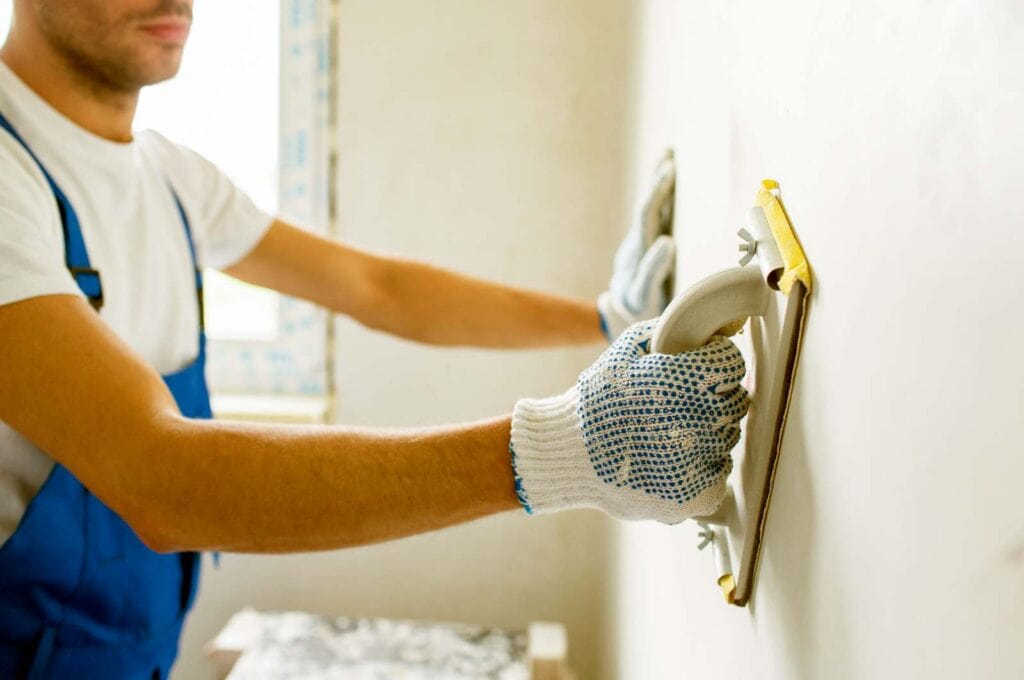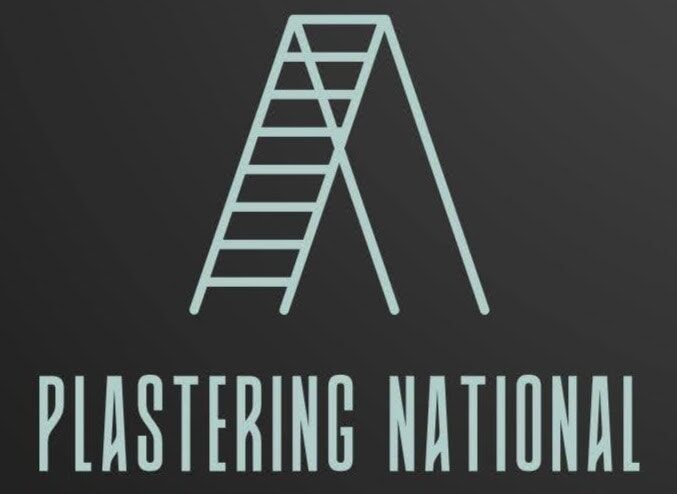Smoothing walls without plastering may seem difficult, but it’s achievable with the right approach.
Whether you’re working on a budget or want an alternative to traditional plastering, several methods are available to help you create a smooth surface without hiring a professional plasterer.
This guide outlines various techniques for preparing your walls and achieving that clean, modern finish you’re after.
Let’s get straight to the point.
Smoothing walls without plastering is achievable through several cost-effective methods. Start by preparing the area, cleaning the walls, and sanding them to remove imperfections.
Apply a filler like Polyfilla for cracks and holes and wash the walls after sanding. Alternatives to plastering include installing drywall, skimming with products like Polycell SmoothOver, applying lining paper, or using textured paint.
It is also important to remove old, flaking paint. Each technique is suited to different wall conditions, allowing you to create a smooth, paint-ready surface without needing professional plastering.
Steps In Smoothing Walls Without Plastering

1. Preparing The Area
Preparation is key before beginning work on your walls. This involves protecting your furniture, ensuring proper ventilation, and gathering the right materials.
- Cover Furniture and Floors: To protect surfaces and furniture from dust and debris, lay down dust sheets or plastic covers.
- Ensure Ventilation: Open windows and doors for air circulation, especially when sanding or using cleaning products.
- Use Safety Gear: Wear a mask and protective eyewear to avoid inhaling dust or chemicals.
2. Cleaning The Walls
One of the first steps to smoothing your walls is to ensure they are clean. Dirt, grease, and old paint can interfere with achieving a smooth finish.
Use Sugar Soap To Remove Grime
Sugar soap is an effective solution for cleaning walls before any further treatment. This product cuts through grease and dirt but won’t remove old paint.
- How to Use: Mix sugar soap with warm water and use a sponge to scrub the walls.
- Rinse: Rinse the walls thoroughly to avoid leaving any residue, which could later affect paint adhesion.
3. Sanding The Walls
Sanding is an important step in smoothing rough or uneven plaster. Whether dealing with minor imperfections or larger flaws, the right sanding technique can make a big difference.
Choosing The Right Sandpaper
- For Major Flaws, Use medium-grit sandpaper (80 to 100 grit) to smooth out larger bumps or rough patches.
- For Finishing: Fine-grit sandpaper (120 grit or higher) is ideal for smoothing smaller imperfections.
Use Of Electric Sanders
For larger projects, consider using an electric sander. This tool will make the process faster and more efficient, but it’s important to handle it carefully to avoid scratching the plaster.
Always wear a dust mask when sanding.
4. Filling Gaps And Cracks
If your walls have cracks or holes, they must be filled before you can achieve a smooth finish. This is particularly important if you recently removed wall hangings, such as pictures or shelves.
Polyfilla For Filling Holes
Polyfilla is a commonly used filler that can easily be applied to cracks and holes.
- Small Holes: Use a tube of Polyfilla and a trowel to smooth the product over the hole.
- Larger Cracks: For more significant damage, apply the filler with a trowel and allow it to dry before sanding.
Tip: Some fillers may shrink as they dry, so be prepared to reapply a second layer if needed.
5. Washing Walls After Sanding
After sanding, wash the walls again to remove dust. A simple solution of warm, soapy water is often enough to clean and prepare the surface for painting or further treatment.
Alternative Techniques For Smooth Walls

1. Drywall As An Alternative To Plaster
Installing drywall (plasterboard) can be a good alternative to traditional plaster for significantly uneven or damaged walls.
How To Install Drywall
- Attach Wooden Studs: Create a stud wall to support the drywall.
- Fasten Plasterboard: Secure the sheets of drywall to the studs using plasterboard screws.
- Seal Joints and Screw Heads: Fill gaps between the boards and cover the screw heads with filler, then sand smooth.
Advantages Of Drywall
- Time-Saving: Drywall installation is quicker than plastering.
- Cost-Effective: It’s generally cheaper than hiring a plasterer.
2. Skim Coating
Consider using a skim coat if you’re looking for a quick and easy way to smooth out rough walls. Skim coating involves applying a thin layer of a pre-mixed compound over the wall’s surface.
Polycell Smoothover
Polycell SmoothOver is a popular product for this type of project. It’s ready to use and can cover uneven surfaces, filling up to 4 mm deep.
- Application: Dip a roller into the mixture and apply it evenly across the wall. Use a trowel to smooth the surface as you go.
Once the skim coat dries, sand the wall lightly to remove any remaining rough patches, and you’re ready to paint.
3. Using Lining Paper
Another method of achieving a smooth finish is to apply lining paper. This technique hides small imperfections and creates a smoother surface for painting or wallpapering.
How To Apply Lining Paper
- Prepare the Wall: Ensure the wall is clean and smooth enough to prevent noticeable bumps under the paper.
- Apply Paste: Use wallpaper paste to affix the lining paper, starting from the top of the wall and working down.
- Overlap Slightly: Overlap the paper slightly to allow for shrinkage as it dries.
After the lining paper dries, you can paint over it for a smooth, professional-looking finish.
4. Removing Old Paint
If old paint is flaking or peeling, removing it before smoothing the walls is essential. This will ensure a smooth finish after painting.
Lead Paint Caution
If your house was built before 1970, the paint may contain lead. To ensure safe removal, use a lead testing kit.
- Sanding: Lightly sand down any remaining paint using fine sandpaper.
- Scraping: In some cases, you may need to use a scraper to remove larger chunks of paint.
5. Using Fine Paste For Minor Flaws
A fine surface filler will help you achieve a smooth, polished look for minor flaws, such as small holes or dents.
Steps To Apply Fine Filler
- Apply the Filler: Use a putty knife to spread the fine paste over small imperfections.
- Sand Smooth: Once the filler has dried, sand it with fine-grit sandpaper until the surface is smooth.
6. Textured Paint
Textured paint is another quick fix for creating smooth walls without plastering. This option is often used in new homes to quickly cover flaws or imperfections in the walls.
Application Process
- Dilute the Texture Paint: Follow the manufacturer’s paint mix instructions.
- Roll onto the Wall: Apply the textured paint with a roller and let it dry before painting or wallpapering.
7. Final Touches: Dust Removal And Painting
Once the sanding and filling are complete, remove all dust from the area. Dust can ruin a paint job, so it’s important to vacuum the room and wipe down the walls one final time.
Use A Light-Colour Paint
A light-colour paint or a primer will help you identify any remaining flaws in the wall, allowing you to sand or fill them before applying the final coat.
Conclusion
Smoothing walls without plastering is possible and can save time and money. Each method has advantages depending on the condition of your walls and your budget.
You can use sanding, skim coating, drywall, or textured paint. By following the steps outlined in this guide, you can achieve a smooth, professional-looking finish without expensive plastering.
While plastering remains a popular method for smoothing walls, alternative techniques like drywall, skim coating, and sanding offer cost-effective and manageable solutions for homeowners looking to refresh their space.
When properly applied, these methods leave walls ready to be painted, wallpapered or left as-is for a clean, modern look.
Frequently Asked Questions About Plastering
What Can I Use Instead of Plastering Walls?
Let’s look at those now.
- Wood Planks.
- Veneer Plaster.
- Lath & Plaster.
- Plywood and Sheet Wood.
- Texture Wall Panels.
- Brick & Masonry.
- Exposed Concrete Block.
- Cement Board.
How Do I Make My Bumpy Walls Smooth?
Apply a first rough coat of joint compound. Apply a second coat of joint compound. Apply a third and final smoother coat of topping compound. Sand the wall texture to a nice, even smooth finish.
Is There an Alternative to Plastering?
What if you could substitute that plaster wall with a material that will allow your kids to be creative and can be rubbed out or painted over whenever that time may come? The answer is a chalkboard paint finish.
How Soon Can I Paint My Newly Skimmed Walls?
Please ensure your plaster is thoroughly dry before you consider decorating. The plaster will take a minimum of 3-5 days to dry thoroughly and, in some cases, longer. Once dry, the plaster will be pale pink, and all brown patches will be gone.
How Long Will It Take to Plaster a Room?
The time it takes to plaster a room depends on what’s required and the size of the room. We can give you an estimated completion time when we come and look at the job and provide a quote.

